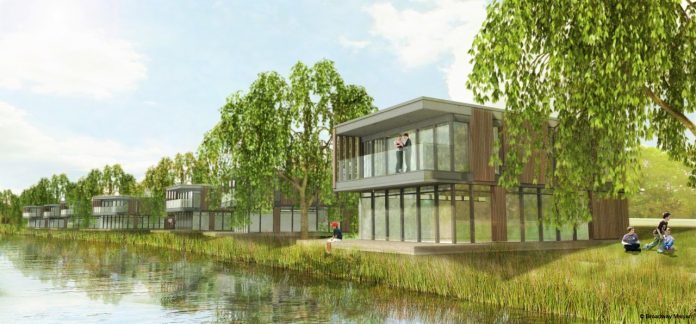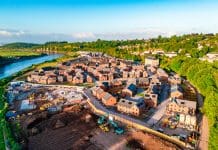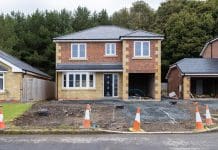UK planners are ignoring flood management innovations that can be used to build developments on floodplains to meet the rising housing demands, says Floodline Consulting Ltd
Recent flooding in the UK suggests we should not be building more homes on floodplains, but Floodline Consulting Ltd, says UK planners are ignoring innovations in building techniques that can be used to build developments on floodplains to meet rising housing demands.
Flood management innovations are already being used successfully in countries like the Netherlands to meet housing demands.
Justin Meredith, managing director of Floodline, said: “Rather than try to build taller and taller flood defences, the Dutch realised that they have to learn to live with the water and give it the space it needs. This strategy has been the real success and game changer in Holland.
“With scientists predicting that climate change will lead to more frequent flooding events, leading to more devastation and misery for those affected, it is simply not good enough for planners to continue to ignore technology that will enable safe sustainable development.”
New technology –‘Can Float’ homes
Floodline is working on several projects that illustrate new ways to build developments on floodplains, using techniques that have been tried and tested in the Netherlands.
The company is working on projects which include the construction of ‘can float’ homes in areas on or close to water, which can rise and fall in times of flood.
The homes have buoyant bases, contained in a concrete basin, and are held in place by guide piles to ensure there is no lateral movement when the building rises or falls when floods enter the basin. The basin may be self-draining or water can also be pumped out after flood waters have receded.
Two planning applications have been submitted for ‘can float’ homes in Dorset and West Berkshire.
Conventional housing vs. flood resilient housing
According to Floodline, experience has shown that councils seem unable to differentiate between plans for conventional housing versus flood resilient housing, owing to fear of building in a flood risk zone. Therefore, the government needs to direct councils to take a pragmatic approach to appropriate development in floodplains that are sustainable and safe.
Meredith added: “Changes to National Planning Policy Framework (NPFF) in 2018 guide local authorities through two key measures: the Sequential Test and the Exceptions Test when considering planning applications.
“The Sequential Test, set out in the government’s NPPF, states that new developments should be steered to areas with the lowest probability of flooding, ie to Flood Zone 1.
“Where there are no reasonably available Flood Zone 1 sites, local authorities can consider Flood Zone 2 sites and only where there are no Zone 1 or 2 areas is the suitability of Zone 3a considered.
“Planning for Climate Change – A Guide for Local Authorities, encourages the authorities to consider design innovation when applying the sequential test and exceptions test.
“The difficulty we’ve had is that an authority which is naturally nervous of encouraging development in a flood-risk area can say that the NPPF doesn’t say they have to consider the fact that a building has been specifically designed for that area and may not be suitable for an area at less risk of flooding.
“If planners were more pragmatic and more open to flood proof homes we would not only unlock land for development but could also solve some of the problems of replacing homes that already exist on floodplains as well as offering viable options to take these homes out of the flood risk all together.”














